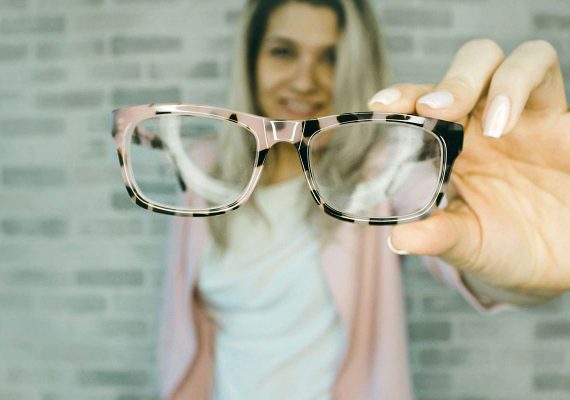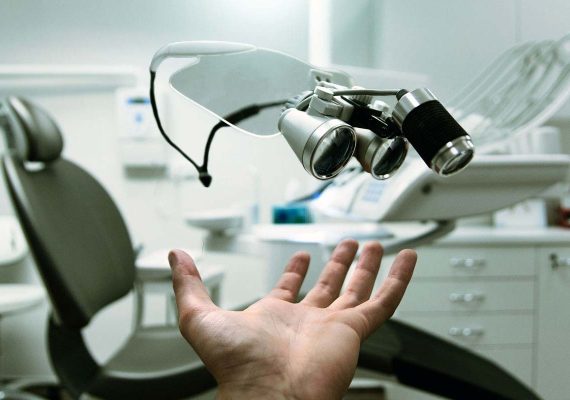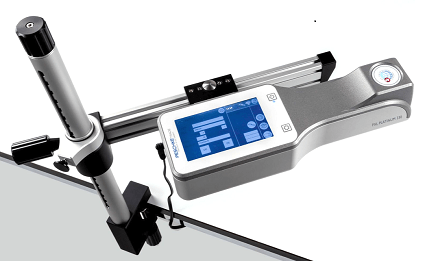Keratoconus is one of the ectatic eye diseases of the cornea which is characterized by gradually progressive thinning and protrusion of central cornea resulting in deterioration of quality of vision. Other similar conditions are Keratoglobus , PMCD (Pellucid Marginal Corneal Degeneration) and post-LASIK ectasia.
Keratoconus begins in young adults in teenage and affects the most productive years of our life.
This condition has no symptoms other than visual blurring and hence often missed in early stages. The vision gradually blurs and becomes distorted, and is often not satisfactorily corrected with glasses. Almost 21% of these patients eventually require surgical intervention like Corneal transplant to restore the corneal curvature and anatomy. So early diagnosis and treatment is mainstay of treating Keratoconus.
Keratoconus can be effectively controlled by Collagen Crosslinking with the help of Riboflavin and Ultraviolet A(365nm). This treatment brings biochemical changes in cornea, increasing its strength upto 300%. Strengthening of cornea leads to arrest of progression of Keratoconus and other ectatic conditions of cornea.
Corneal Collagen Crosslinking with Riboflavin – C3R or CXL is a promising treatment to control the progression of Keratoconus
Shreya Eye Centre in Delhi now offers you latest advancement in crosslinking treatment- Pulsed Accelerated C3R or CXL
Learn About Keratoconus And Its Treatment
- What Is Keratoconus?
- What Is Corneal Collagen Cross-linking (C3R)?
- The Principle Of C3R
- The Device For C3R
- How the C3R or CXL Procedure is done?
- What are the risks and consequences involved?
- Advantages Of Cross Linking
- Our Experience


What Is Keratoconus?
Normally the cornea is nearly spherically shaped thus allowing light to be focused clearly on the back of the eye (retina). However in a condition called keratoconus, the cornea becomes soft resulting in progressive thinning and bulging giving a conical shape to cornea. As the cornea gradually becomes more cone-shaped, the vision blurs and becomes distorted due to a high degree of astigmatism.
Initially vision may be correctable with spectacles, but as the condition progresses, and the cornea becomes more irregular causing distorted vision, spectacles become less effective. In such a situation, rigid contact lenses provide better vision up to a stage after which corneal surgery is required.
C3R or CXL is a promising treatment to arrest the progression of Keratoconus.
What Is C3R -Corneal Collagen Cross-linking or CXL
Cross linking of cornea collagen (C3R or CXL) is a process to increase the bio-mechanical stability of corneal tissue. The aim of this treatment is to create additional chemical bonds inside the corneal stroma by means of a highly localized photo polymerization.
The indications for cross linking today are corneal ectasia the disorders such as keratoconus , PMCD (Pellucid Marginal Corneal Degeneration), keratectasia after refractive lamellar surgery (Post-LASIK Ectasia) and corneal melting that is not responding to conventional therapy.
Traditional C3R takes roughly 60 minutes in one eye. But latest advancement has decreased the time of procedure to 20-30 minutes. This is called Accelerated C3R or Accelerated CXL.
The Principle Of C3R or CXL
Photo-polymerization using UV-A light was found to be the most promising technique to achieve cross-links in connective tissue. Photo-polymerization is activated by means of a non-toxic and soluble photomediator and a wavelength which is absorbed strongly enough to protect deeper layers of the eye (Riboflavin-UVA technique).
UV-A radiation with concomitant administration of riboflavin solution leads to physical cross linking of the corneal collagen fibers.
Thus progressive corneal thinning is slowed down or even stopped and the bio-mechanical strength of corneal tissue is improved.
The Device For C3R or CXL
For C3R we need Riboflavin (Vitamin B2) and a special device called cross-linker. Cross linker is a device to deliver UV-A light of specific wavelength of 365 nm .
Conventional CXL delivers at controlled energy level of 3 mw/cm.sq which takes 60 minutes of treatment duration
Latest technology like Peschke Platinum 330 delivers UV-A light at higher energy levels from upto 30 mw/sq.cm in pulsed manner. This is called Pulsed Accelerated CXL. It reduces treatment time to 20 minutes and increases safety.

How the C3R or CXL Procedure is done?
- CXl is done under topical anesthesia. Patient is fully awake and don’t feel any pain.
- CXL can be done with Epithelium-on or Epithelium-off. Most peer review studies have shown that Epithelium-off procedure has better results.
- After removal of the corneal epithelium, riboflavin solution is instilled for 20 minutes on to the cornea.
- UV-A radiation starts under continued administration of riboflavin solution.
- Duration of UV-a light depends on energy levels opted. Conventional CXL is done with 3mw energy for 30 minutes.
- Rapid CXL can be done in as less as 3 minutes.
- A bandage contact lens is applied on the cornea in the operated eye.
- Post operative treatment is advised as per surgeons preference.
- Bandage contact lens is generally removed on 3-5 days from day of procedure.
- Protective eye wear, such as sunglasses is to be worn for a few days until complete healing takes place.
- Standard precautions as advised after LASIK are also advisable after CXL for 2 weeks.
What are the risks and consequences involved?
CXL is considered to be a very safe procedure. Very few potential complications associated with this treatment have been reported so far. The Ultraviolet light dose used is designed to prevent damage to the endothelial cells that line the back of the cornea or the other structures within the eye. No lens opacities (cataracts) have been attributed to this treatment in European trials.
The treatment involves the outer layer (epithelium) of the cornea
- There is therefore discomfort for few days
- Blurring of vision due to short-term haze in cornea resolves in 1-2 weeks
- Infection of cornea can happen if precautions are not followed during 1st week after procedure
- Inability to wear contact lenses for several weeks after the treatment.
- Changes in corneal shape necessitates fitting of a contact lens or a occasional change in spectacle correction.
- As is the case with any treatment, there may also be long-term risks that have not yet been identified.
- The increased corneal rigidity induced may wear off over time and further periodic treatments may be required in few cases.
Advantages Of Cross Linking
- Permanent in most cases
- Simple- Single- 30 min treatment
- Minimally invasive procedure
- Day care procedure, No need for admission
- Stops the progress in almost all cases and causes regression of disease in some cases
- Avoids Corneal transplant and hence risks of transplant like graft rejection, glaucoma, infection etc.
- No major long term precautions
- No injections or stitches
- No incisions as in Intacs or Corneal ring segments
- Quick recovery with short follow up
- Can avoid dependency on Contact lenses if done in early stage of keratoconus.
Our Experience with CXL
We have over 14 years experience with C3R with over 500 eyes
Our results have been very promising with the slowing or cessation of keratoconus progression in almost 100% of eyes.
Many patients gets topography improvement also.
Schedule Your Eye Care Appointment
Submitting your appointment request is the initial step towards personalized and timely eye care.
Our team will contact you within 24 hours to confirm your appointment. For immediate assistance, please call us directly.

